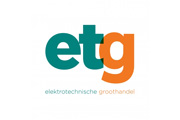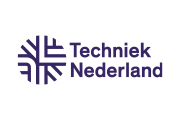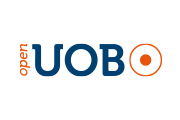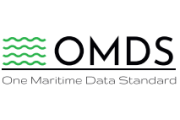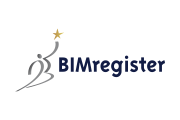ETIM classification model
What is ETIM?
 ETIM stands for ETIM Technical Information Model. The ETIM product classification is an international logistics standard for a uniform classification of products (also technical) in various categories, and where the accompanying product features can be established within the category. This is possible by way of product categories, features, units, and limit values which are described in a language-independent manner. Each class has multiple synonyms. That makes it much easier for users to search for the right product.
ETIM stands for ETIM Technical Information Model. The ETIM product classification is an international logistics standard for a uniform classification of products (also technical) in various categories, and where the accompanying product features can be established within the category. This is possible by way of product categories, features, units, and limit values which are described in a language-independent manner. Each class has multiple synonyms. That makes it much easier for users to search for the right product.
Product classification prevents linguistic confusion and mistakes and makes it possible to identify the products in a standard way and to exchange technical and trade data electronically between various parties. ETIM is the ultimate classification model for the installation, construction, maritime and tools sectors.
ETIM classification is already applied in the following countries:
|
|
|
|
|
|
|
|
|
|
|
|
|
|
|
|
|
|
|
|
|
|
|
|
|
The major advantages:
- Raising the quality of data because data is recorded in a uniform way
- Fewer erroneous orders, therefore minimising failure costs
- More efficient communication because everyone is always talking about the same data
- Prevention of work being done twice because data is entered only once
- Medium and manufacturer neutral so that data can be exchanged without problems
- Classified products are immediately available in multiple languages.
Product classes
The ETIM product classification is a logical and uniform categorisation of producer in various classes which records the selective product features in the class. This is made possible by using product classes, features (values), units and ranges which are described in a standard fashion. And each class has its own different synonyms (such as tube, pipe, or conduit). This makes searching for the right product very simple for users.
Product features and values
A feature describes a characteristic of a product, such as the type of material from which it’s made, for example, the dimensional data or the colour. A distinction is made between alphanumerical, numerical, and logical features. In the case of alphanumerical features, there’s a choice between possible values in a fixed row (for example colour = green, yellow, red etc.). Numerical features require a numerical value with a certain unit, such as the length in millimetres, for example. On the other hand, a logical feature lets you choose only between yes and no..
National features
Upwards of ETIM 8. 0 it’s possible to include national features in a class. A national feature is one that is explicitly relevant for one country. In many cases, this will be quality marks. Examples for the Netherlands include KIWA, KOMO and GASTEC.
Consult ETIM International’s Classification Management Tool for a detailed view.
ETIM MC (Modeling Classes)
In 2016, the ETIM model for the Netherlands was expanded to include geometric features, known as Modelling Class (MC) values. In other words: the dimensional data of a product such as length, breadth, diameter, or thickness of the wall of a coupling head. By adding this extra data, a 3D representation of an object can be created in a CAD programme, with a direct link to products from de 2BA Data Pool which can be connected to the object..
Become an ETIM Participant
Good and standardized readable data is essential for installing in the Netherlands. That is why 2BA has been encouraging the use of ETIM for many years. In a practical sense, but with the 2BA & ETIM COMBI contract also in a financial sense. This combination contract offers you, at a greatly reduced rate, the regular (data) services of 2BA and the many benefits of ETIM Membership. Don’t you also want to help decide how your products can be found worldwide?
As an ETIM participant:
- you get access to the Dutch translations
- you can contribute to the development of the ETIM standard
- you get a say in the management of class definitions. This can be done through participation in committees and through individual requests. Through the classification committee, you can also exert international influence on the maintenance and management of the classification in relation to your products
- you get access to the ETIM knowledge base, useful applications like ETIM UP and you can use support department. The ETIM advisors of Ketenstandaard Bouw & Techniek are happy to help you too
- As a participant you will have access to the international Classification Management Tool form ETIM International (ETIM CMT). Here you can look up the classes and their (3D) characteristics, check which changes have been made and which proposals for change are being discussed
- With your participation you strengthen the influence of Ketenstandaard on the representation of interests of your organization and the Dutch construction supply within ETIM International.
ETIM Classification Committees
Something can only be a standard if it is accepted by a community. Participation and support are important pillars of the International ETIM standard. The ETIM Committees are the ‘front portal’ of the international ETIM Technical Committee. The ETIM Technical Committee is ultimately responsible for the ETIM classification. ETIM Netherlands has one seat within this committee. There are active ETIM committees for various domains in each participating ETIM country. The members, consisting of product specialists from manufacturers and wholesalers, represent the general interest of each domain.
ETIM versions
The ETIM model is constantly being developed. Updates from ETIM International are therefore made available to its users in the form of official releases. Official releases are published every two years by ETIM International. But because certain market parties often need to get to work fast with newly announced ETIM features, ETIM also makes its new versions available through interim, weekly publications, in other words, in advance of the following new official version. We call this ETIM Dynamisch.
A dynamic or interim ETIM release contains all classes already published or which have the status ‘ready for publication’ at the moment of exporting, whether it concerns new or existing classes that have been modified. To indicate the differences to the current official ETIM release, we mark them with amendment codes. Bear in mind that a dynamic release does not yet contain the full official release, including the classes, features and values that are ‘tagged’ to be removed from the following official release.
Ketenstandaard Bouw en Techniek
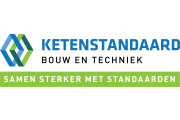 Ketenstandaard Bouw en Techniek (foundation for chain standard construction and technology) is responsible for managing ETIM in The Netherlands. This foundation is a collaborative partnership of all parties in the supply chain: installers, builders, wholesalers, and manufacturers with the aim of achieving uniform data communication in the sectors involved. The foundation is supported by parties from all echelons of the construction chain: Aedes, BNA, Bouwend Nederland, Fedet, FME, HIBIN/VVNH, NL Ingenieurs, NVTB, Rijksvastgoedbedrijf, Techniek Nederland, Vertaz and VNG. In addition, the platform collaborates with numerous partners, including around a hundred software parties and of course, 2BA.
Ketenstandaard Bouw en Techniek (foundation for chain standard construction and technology) is responsible for managing ETIM in The Netherlands. This foundation is a collaborative partnership of all parties in the supply chain: installers, builders, wholesalers, and manufacturers with the aim of achieving uniform data communication in the sectors involved. The foundation is supported by parties from all echelons of the construction chain: Aedes, BNA, Bouwend Nederland, Fedet, FME, HIBIN/VVNH, NL Ingenieurs, NVTB, Rijksvastgoedbedrijf, Techniek Nederland, Vertaz and VNG. In addition, the platform collaborates with numerous partners, including around a hundred software parties and of course, 2BA.
ETIM, Ketenstandaard and 2BA: a cast-iron combination!
From the basis, the structure of the 2BA database is completely tailored to the ETIM product classification model. And that proves its worth every day to the thousands of data buyers and suppliers who take part in 2BA. Thanks to this well-thought-out database structure, it’s possible for installation companies to make rapid searches of millions of data records for products and their related trade (wholesale) information.
And suppliers themselves also experience fully the ease offered by 2BA and the ETIM product classification. For example, the recording by manufacturers of the technical and geometric features of their own products in a systematic manner. Subsequently, wholesalers and installers make grateful use of product information from the manufacturer. Since the product data is available already classified, wholesalers can also offer this search structure through their own websites or apply it in the catalogue and installers can, in turn, search efficiently for the items they need, finding, ordering, and applying them during every relevant work process.




